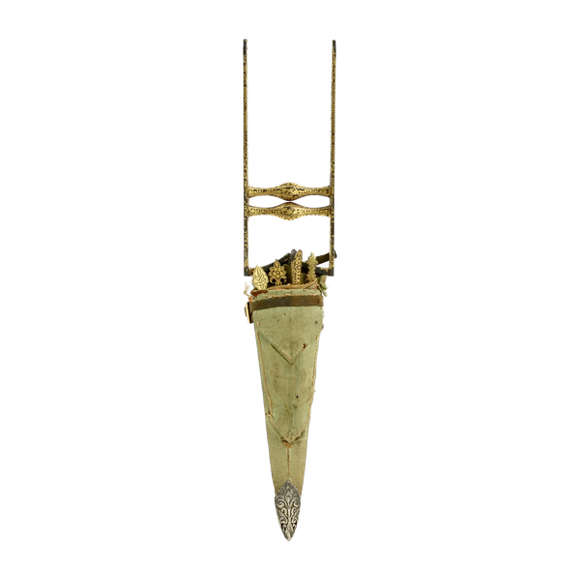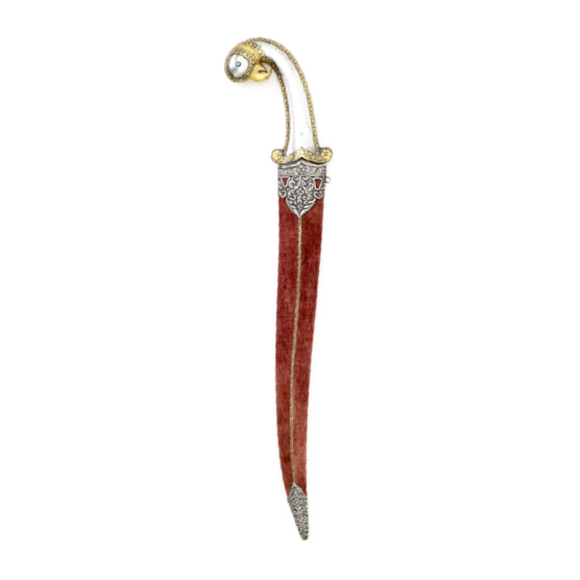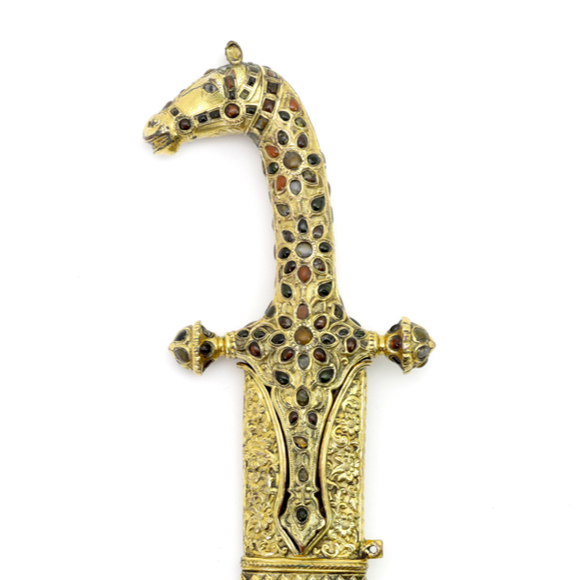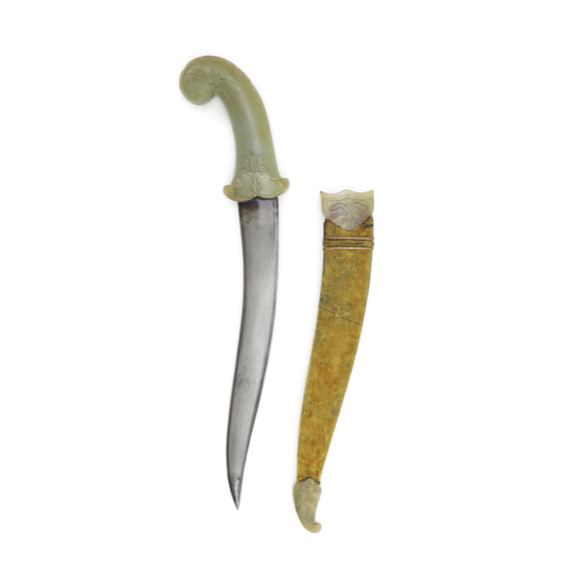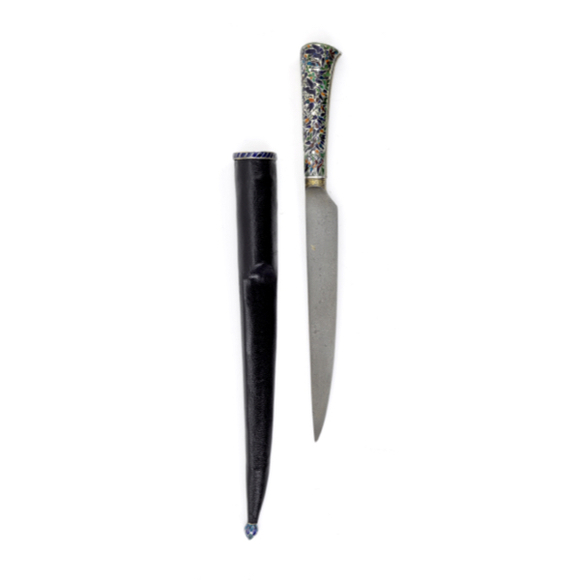With a fine wootz blade with a pronounced center ridge.

41.7 cm
23.7 cm
Base 7 mm
Middle 7 mm
Tip 8.5 mm
(at thickening)
Base 59 mm
Middle 29 mm
Tip 21 mm
(at thickening)
283 grams
1 cm from hilt
Iron, wootz steel, gold
North India
Southwest of Rajasthan or Gujarat
19th century
Description
A nice North Indian katar dagger. Its wootz blade has a prominent center ridge and thickened armor-piercing tip.
The hilt consists of two narrow, slightly hollow sidebars that end in a point. The handlebars merge into a larger triangular element.
Both blade and hilt style are of a type I've come to associate with the southwestern part of Rajasthan, mainly Sirohi, and Gujarat.
The hilt is overlaid with patterns in gold, showing a slightly different pattern on either side. This enabled the wearer to wear either side up.


Provenance
The piece comes with a certificate of authenticity that was issued by the Parisian dealer Slim Bouchoucha in 1979, the year I was born.
It was slightly oversold, the date given for the piece on the certificate is 17th century, and the piece is clearly from the 19th century. Late 18th at best if we are very optimistic.
Still, it's fun to have documents to travel with pieces like that that give some background on where they have been.


Stand
The piece comes with a matte black metal stand for displaying it upright.

Here shown to the right, at PAN Amsterdam 2022.













The style typical of Kutch, the execution far above what is normally seen on work from that area.
Nice and complete with opaque green hilt and scabbard mounts.
With designs of animals, often attributed to Lucknow, north India.

